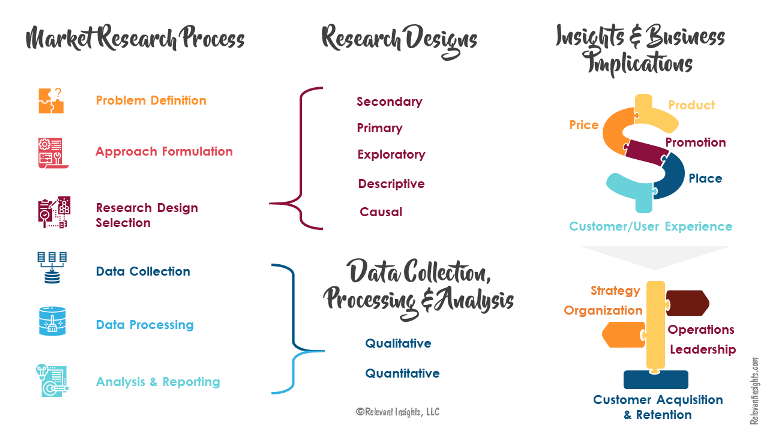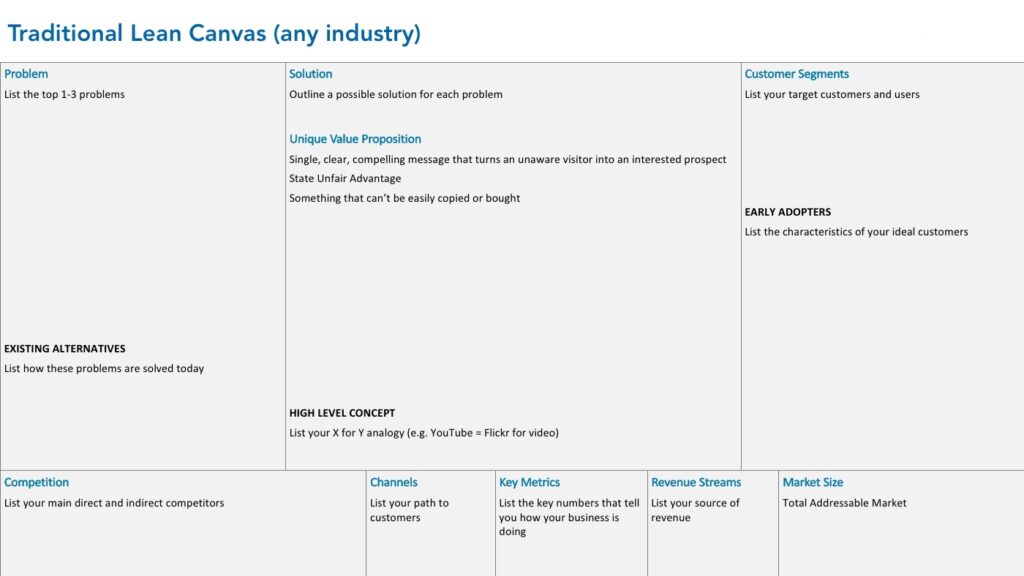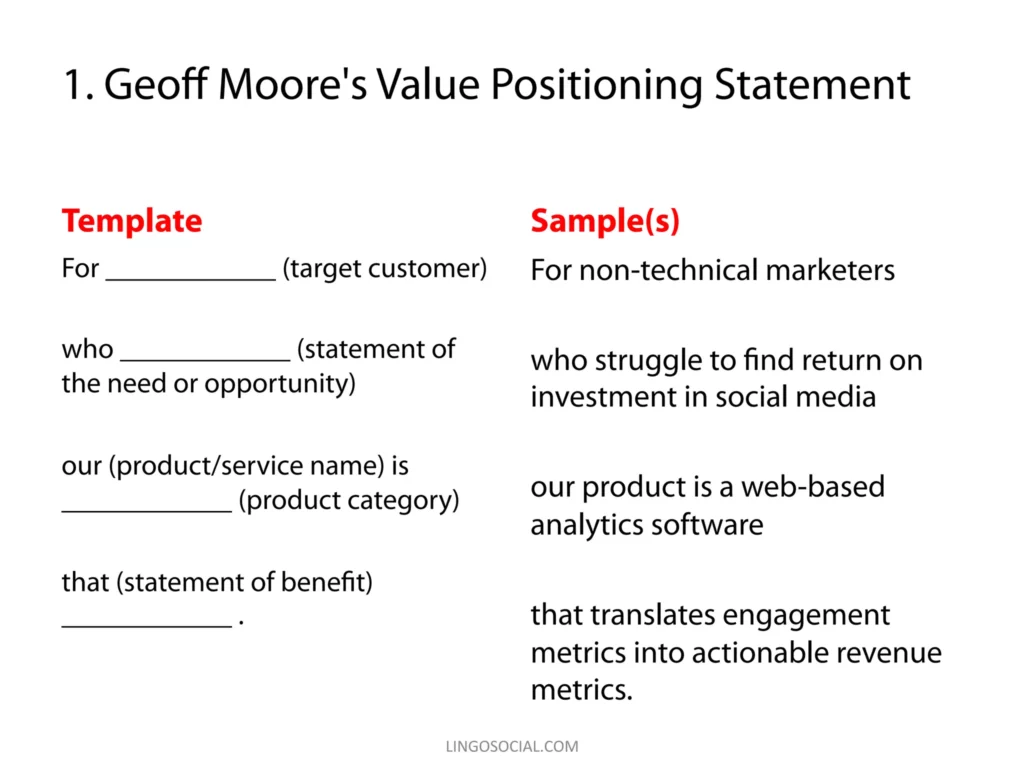Designing Products That Hit the Bullseye: 5 Steps to Align with Your Target Market

In today’s highly competitive business world, knowing your target market is the most important thing you can do to succeed. When you design a product for your audience, it can greatly affect how it is received, how many people buy it, and where it stands in the market as a whole. In this blog post, we’ll talk about five important steps that will help you make a product that meets the needs and wants of your target market. Let’s go!
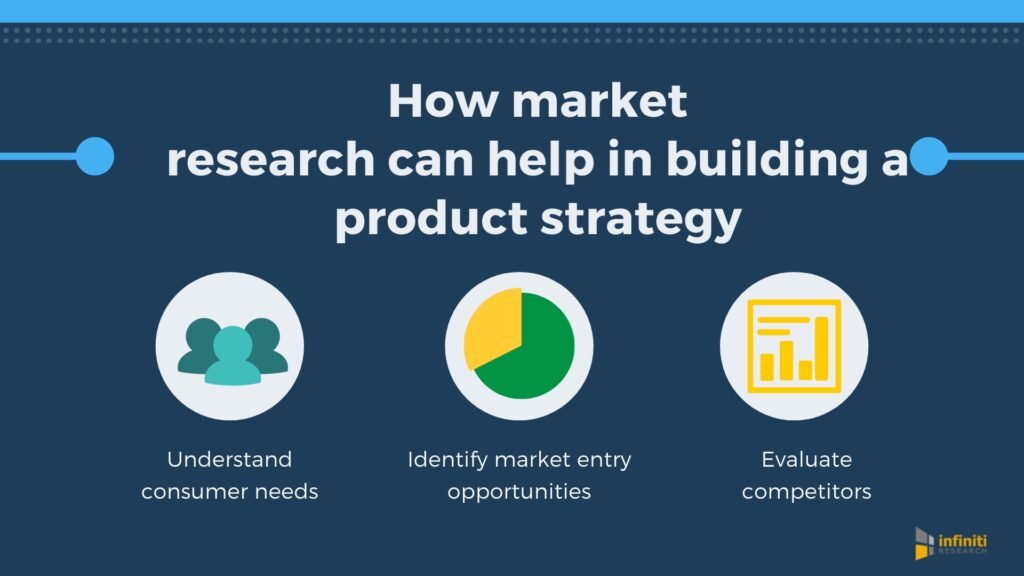
What is Target Audience Design
The process of designing a product to satisfy the requirements and desires of a specific collection of individuals is known as target audience design. This audience is referred to as the intended audience.
When designing a product for a specific audience, it is essential to comprehend their desires and requirements. What are they seeking in a product similar to yours? What are their aches and pains? Once you have an understanding of their requirements and desires, you can begin designing a product that satisfies them.
Additionally, it is essential to communicate the vernacular of your intended audience. Use language that they can relate to and comprehend. This will assist them in relating to your product and comprehending its benefits.
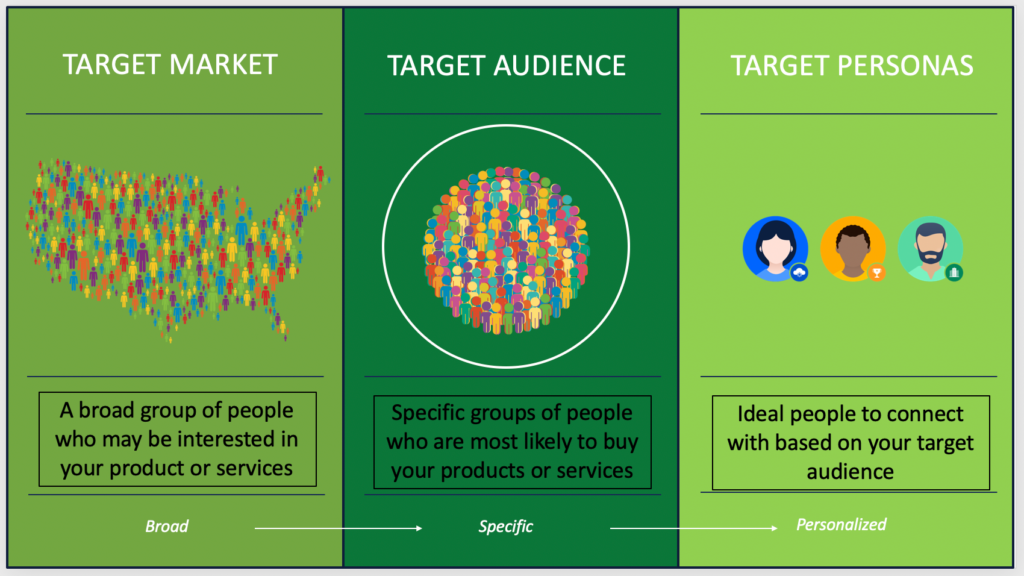
Lastly, ensure that your product is user-friendly. Your target audience should have no difficulty using your product. They will not be able to use it and will not be able to benefit from it if it is too complicated.
Target audience design is an essential element of product development. By understanding your target market and designing a product that suits their requirements, you can increase the likelihood of your product’s success.
Consider the following additional factors when designing a product for your target market:
This includes their age, gender, income, level of education, and location.
Their psychographics consist of their values, beliefs, hobbies, and way of life.
This includes how they devote their time, what they purchase, and what they choose to peruse.
By grasping these factors, it will be easier for you to create a product that will appeal to your target audience.
Why is target audience design important?
Designing your product’s target audience is essential because it helps to assure its success. If you do not design your product for your intended market, it is likely that they will not be intrigued.
Here are some of the reasons why designing for a specific audience is crucial:
It assists you in designing a product that fulfills the requirements of your target market. When you comprehend your intended market, you can design a product that addresses their problems and fulfills their requirements. This will increase their likelihood of purchasing your product.
It assists you in reaching your intended audience. When you design a product for a specific demographic, you can reach them more effectively through marketing and advertising. This will aid in increasing your revenues.
It helps you set your product apart from the competition. When you design a product for a specific demographic, you can create a product that is distinct from the competition. This will increase the product’s appeal to the intended market.
It aids in building a robust brand. When you design a product for a specific group of individuals, you can create a brand associated with that group. This will help you develop a strong brand that your target audience respects and trusts.
Overall, target audience design is an essential element of product development. By understanding your target market and designing a product that suits their requirements, you can increase the likelihood of your product’s success.
Here are a few more suggestions for designing a product for your target market:
Do your homework. The initial stage is to conduct research and comprehend your intended audience. This involves gaining a comprehension of their demographics, psychographics, and behavior.
Develop customer personas. Once you have an understanding of your target market, you can develop customer personas. Buyer personas are fictitious depictions of your ideal clients. They help you gain a deeper understanding of your intended audience.
Utilize customer input. Utilizing customer feedback is another excellent method for comprehending your target market. This feedback can help you determine what aspects of your product your target audience prefers and dislikes.
Iterate and test. Once you have a product design, testing and iteration are essential. This involves evaluating your product with your intended market and modifying it based on their feedback.
How to identify your target audience
1. Conduct Thorough Market Research
The first step in making a product that fits the needs of your target market is to do thorough market research. Here are some important things to keep in mind when doing market research:
Identify the Demographics of Your Target Market: To start, you need to know your target market’s demographics. This includes things like age, gender, area, level of schooling, level of income, and job. These facts help you get a clear picture of the people or groups your product is meant for.
Explore Psychographic Factors: Don’t just look at the demographics of your target market; also look at the psychographics. Psychographics are about your possible buyers’ views, values, beliefs, hobbies, and ways of life. This knowledge helps you figure out what drives them, what they like, and how your product can meet their goals and needs.
Analyze Your rivals: Look at what your rivals are selling, their strengths and flaws, and how they are positioned in the market. Find out what makes your product different from the competition and how you can use that to attract your target market. Knowing your competitors’ strengths and weaknesses helps you find gaps or wants your product can fill.
Look into market trends: Keep up with the latest market trends and changes in your business. This means keeping an eye on new tools, changes in how people act, and changing tastes in your target market. By spotting trends, you can make sure that your product design is forward-thinking, current, and meets your audience’s changing needs.
Get Customer Feedback: Talk to your target market directly to find out what they think and what they have to say. Do polls, interviews, focus groups, or online chats to discover their biggest problems, difficulties, and hopes. This feedback is a great way to learn how to improve your product design and make it fit your customers’ wants.
Use Tools for Data Analysis: Use tools and sites for data analysis to collect precise data about your target market. These tools can give you information about how customers act, what they buy, how involved they are online, and more. Using data, you can make choices based on facts and confirm your ideas about what your target market wants.
By doing detailed market research, you can learn a lot about the demographics, psychographics, tastes, and wants of the people in your target market. With this information, you can build a product that speaks to your audience, making it more likely to do well on the market.
How can Someone Without Experience Find Information About Psychographic Factors?
Finding knowledge about psychographic factors can be hard for someone with no experience, but it’s not impossible. Here are some things you can do to find out about psychographic factors:
- Online study: To start, do a lot of study online. Look for industry papers, market studies, and study on customer behavior that tells you more about the people who make up your target market. There are a lot of study companies and newspapers that give free or paid studies that look into what people want, what they value, and how they live. Also, read academic papers, internet boards, and social media groups that are important to your target market to find out what people are talking about and talking about.
- Surveys and Questionnaires: Make your own surveys or questionnaires to get straight information from your target group about their personality. Online poll tools like Google Forms and SurveyMonkey can help you collect answers and examine the data. Create questions that will help you learn more about their interests, hobbies, values, attitudes, and decisions about how to live. Spread the polls through different methods, like social media, email lists, and industry-specific groups, to get responses from a wide range of people.
- Interviews and focus groups: Reach out to people who are in your target market and talk to them one-on-one or set up focus groups. Prepare a set of open-ended questions that will help you learn more about their goals, likes, dislikes, and problems. These personal insights can give first-hand information about psychographic factors that can be very helpful. Look for networking events, trade shows, or online sites in your area where you can meet people who might be interested.
- Social listening: Use social listening tools to keep an eye on online talks and learn more about the psychographics of your target market. You can keep track of comments, hashtags, and conversations about your business or product group with tools like Brandwatch, Hootsuite, and Mention. Look at the words, feelings, and subjects that come up in these talks to learn more about the interests, values, and habits of your target audience.
- Interviews with and feedback from customers: Talk to your current customers to learn more about their personalities. Interview your customers or send them feedback forms to find out why they bought your product, how they live their lives, and how your product fits into their general values and interests. Use customer relationship management (CRM) software to keep track of customer information, examine it, and look for similar trends or themes.
- Collaborate with Experts: You might want to get advice from people who are experts in the field, like people who do market research, people who study customer behavior, or psychologists who specialize in consumer psychology. These experts can give you helpful advice and help you understand the psychographic factors that are important to your target market.
Remember that it’s important to consider privacy and ethics when getting information about psychographic factors. Make sure that you are getting data in a legal and clear way, and make any private information anonymous to protect the names of the people who are taking part.
Applying the Knowledge
Susie is a hypothetical woman who wants to start a cupcake business. She has no idea how to make Market Research. So here are the best steps she should take to conquer her research.
She should start by:
-
Define the Target Market: she should start by identifying her target market. Who are the potential customers for her cupcakes? Is she targeting individuals, families, or businesses? Once she has a clear understanding of her target audience, she can proceed to the next steps. Here is a set of question that will help with this task:
-
Who is my ideal customer? What are their demographic characteristics, such as age, gender, location, and income level?
-
What are the specific needs or problems my cupcakes can solve for customers? How can my cupcakes enhance their lives or fulfill their desires?
-
What is the target audience’s preferred purchasing behavior? Are they more likely to order cupcakes for special occasions, buy them as treats, or purchase them regularly?
-
What are the psychographic factors of my target market? What are their interests, hobbies, values, and lifestyle choices? How can my cupcakes align with their preferences and aspirations?
-
Where can I find my target market? Are they active on specific social media platforms, part of online communities, or do they frequent certain local establishments?
-
Should I consider any specific cultural or dietary preferences when defining my target market? For example, are there customers looking for vegan, gluten-free, or organic cupcakes?
-
What is the size of my target market? How many potential customers exist within a specific geographic area or online community?
-
Who are my competitors targeting? Are there any underserved or niche segments within the cupcake market that I can focus on?
-
What is the purchasing power of my target market? Can they afford premium-priced cupcakes, or are they more price-sensitive?
-
What are the psychographic characteristics of my ideal customer in terms of taste preferences, flavor combinations, or decorating styles? How can I tailor my cupcakes to appeal to their specific tastes?
-
2. Conduct Online Research: Susie can begin her market research online. She can explore websites, blogs, and social media platforms to gather information about the cupcake industry, trends, and consumer preferences. Look for articles, forums, and social media groups where cupcake enthusiasts discuss their favorite flavors, designs, and experiences. This research will help Sussan understand the general landscape of the cupcake market and identify potential opportunities.
Which are the best places she can use to conduct online research?
- Industry Publications and Websites: Browse food, baking, and confectionary periodicals and websites. These sources typically provide market trends, customer behavior, and insights. Baking Business, Pastry Arts Magazine, and Food Business News.
- Market Research Reports: Trusted businesses can provide in-depth cupcake industry information, including market size, growth estimates, and consumer behavior. MarketResearch.com, IBISWorld, and Statista provide comprehensive studies that libraries and schools may buy.
- Government and Trade Organization Websites: Visit government websites like the SBA or USDA for industry-specific materials, statistics, and insights. For industry news and research, visit the American Bakers Association or National Restaurant Association websites.
- Social Media: Ask cupcake lovers, communities, and companies questions on Facebook, Twitter, and Instagram. Follow relevant sites, join groups, and engage in conversations to understand customer preferences, trends, and popular tastes or designs.
- Online Forums and Communities: Join baking, dessert, and food forums. Reddit (r/Baking or r/Food), CakeCentral, and Pinterest groups may provide consumer and expert advice.
- Consumer Review Websites: Read cupcake company reviews on Yelp, Google Reviews, or TripAdvisor. This may reveal client tastes, trends, and company shortcomings.
- Blogs and Influencers: Follow dessert-focused food bloggers. These sites include recipes, trends, and customer preferences, which may help Sussan remain current and inspire her cupcake company.
How can someone without experience be able to research their competitors?
If you don’t have a lot of experience, it can be hard to find rivals. However, there are several ways to find competitors in your business. Here’s how someone who doesn’t know who their rivals are can find out:
- Google, Bing, or Yahoo: Conduct a thorough web search. Use “cupcake businesses,” “cupcake shops,” and “cupcake bakeries” with your area or target market. Check local competition search results, websites, and business directories.
- Local Business Directories: Check industry or local web directories. Yelp, Yellow Pages, and Google My Business. These directories categorize companies, making cupcake competition simpler to locate.
- Explore Facebook, Instagram, and Twitter: cupcakes, baking, and local businesses. Find local cupcake companies on social media. Follow, interact with, and study their offers and customer service.
- Local Market Research: Attend local farmers’ markets, food festivals, and food-related activities. Find cupcake sellers. Note their offers, price, and presentation. Talk to vendors and guests to learn about local cupcake companies.
- Ask for Recommendations: Talk to friends, relatives, and neighbors who know the local market. Ask about local cupcake shops. Word-of-mouth may reveal rivals that internet searches miss.
- Local Media: Check local food and business newspapers, magazines, and websites. Find local cupcake business articles. These periodicals regularly discuss well-known rivals.
- Attend local business networking events, community gatherings, and trade exhibits. Join food entrepreneurs, bakers, and industry experts. Ask about cupcake companies. Networking might reveal industry rivals.
2. Define Your Unique Value Proposition
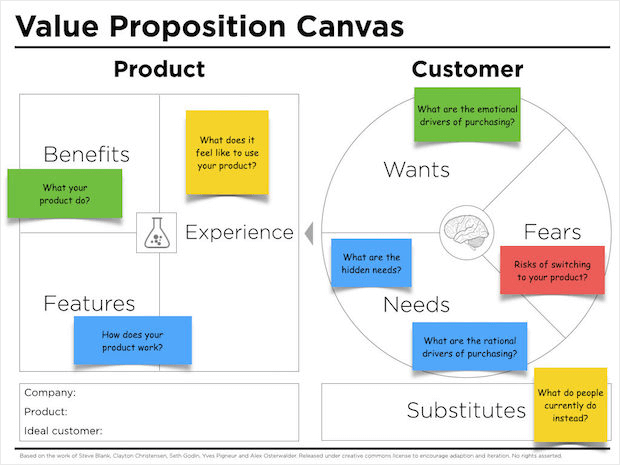
Designing a product that connects with your target market requires defining your unique value proposition. It distinguishes your goods from the competition and highlights its advantages. Your unique value proposition should address these factors:
- Understanding customer demands is essential to creating a compelling value offer. Market research and consumer insights will reveal the difficulties your product can answer. You may sell your goods by meeting these requirements.
- Identify Differentiators: A good value proposition should show how your product differs from rivals. Examine your rivals’ products to find gaps or strengths. Find your product’s competitive advantages. Find out what makes your product special—quality, technology, customization, or service.
- Key features: List your product’s main features. Consider how your product improves their lives, solves issues, or satisfies needs. Communicate advantages clearly, whether they save time, improve convenience, boost productivity, or delight customers. Use language that speaks to your audience and highlights value.
- In addition to practical advantages, consider your product’s emotional appeal. Customers’ feelings? Is it joyful, exciting, secure, or confident? Consumers base purchases on emotions. Match your value offer to your target market’s emotional needs to build trust and favorable sentiments.
- Communicate Clearly: Write a value proposition statement that your target market can understand. Avoid jargon. Communicate your product’s unique features and value in simple, appealing terms. Make it clear why your product is better.
- Test and refine your value proposition with your target market. Employ surveys, focus groups, or user testing to evaluate your value proposition. Use insights to improve. Test and modify your value offering to meet client expectations in a changing market.
Defining a distinctive value proposition helps you convey your product’s unique advantages and worth to consumers. This helps you position your product, distinguish from rivals, and attract and retain customers.
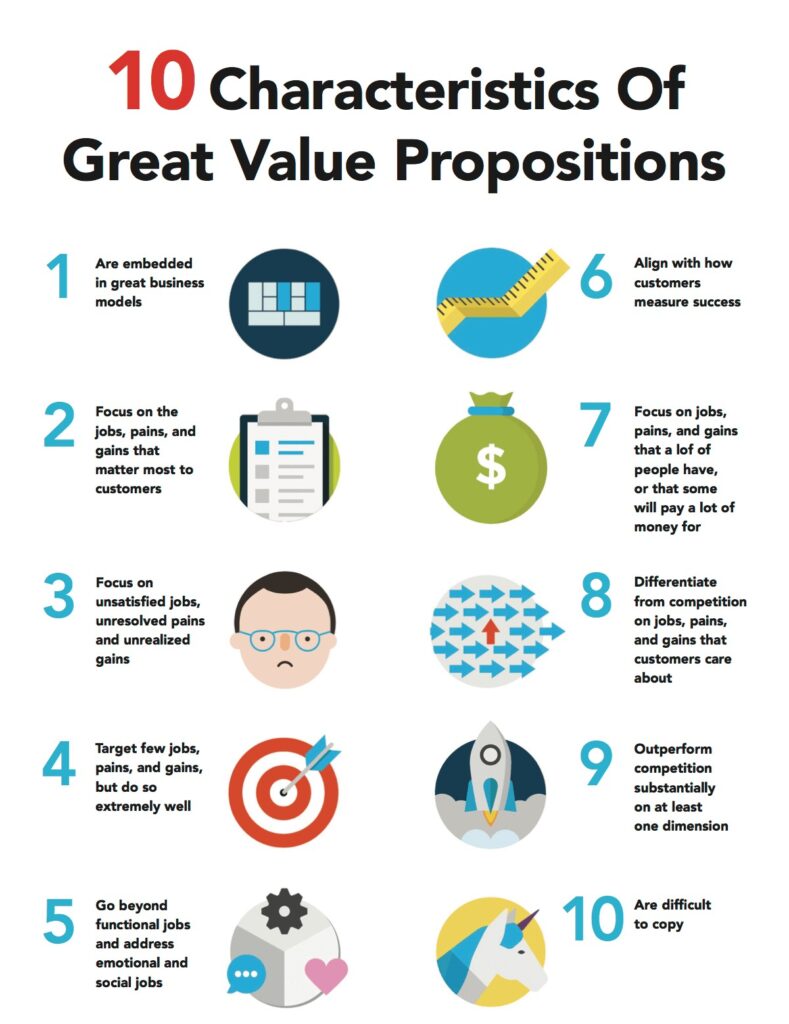
Applying the Knowledge
Step-by-step thinking may help you create and deploy a value proposition. Helpful structure:
- Customer requirements: Understand your target market’s requirements, pain spots, and desires. Market research on prospective consumers and their issues and objectives. To understand their values, consider functional and emotional requirements.
- Analyze the Competitive Landscape: Assess your competition to find gaps or opportunities for your product. To distinguish and examine their value propositions and products. Find your product’s distinct advantages above the competition.
- Establish primary Benefits: Based on the prior two phases’ observations, establish your product’s primary benefits. These advantages should satisfy your target market’s demands and showcase your product’s uniqueness. Focus on how your product enhances consumers’ lives.
- Make a Strong Statement:
Create a compelling value proposition that summarizes your product’s advantages. Use language that connects with your audience and conveys value. It should be simple and memorable. Address your product’s “why”—why should buyers buy from you? - Test and Repeat: Get market input to validate your value offer. Surveys, interviews, and focus groups may assess their value proposition comprehension. Use their feedback to improve your message and ensure audience resonance.
- Integrate Marketing and Communication: Use your value proposition in marketing and communication. Display your value proposition on your website, social media platforms, advertising campaigns, and other marketing materials. Communicate your distinct features and value across all touchpoints to reinforce your market position.
- Product Development and Customer Experience: Align product development with your value proposition. Maintain product innovation to meet commitments. From early encounters to post-purchase assistance, match customer experience with value proposition. To gain confidence and loyalty, give value consistently.
- Monitor and adapt: Track market trends, consumer input, and customer requirements and preferences. Adjust your value offering to change trends. To keep your value proposition current and appealing to your target market, assess and improve it.
This step-by-step method helps you create a powerful value proposition and apply it to real-life scenarios. To provide clients with a memorable experience, your value proposition should be customer-centric, distinctive, and constantly articulated.
3. Develop User Personas
What is a user persona?
User personas are fictitious representations of target audiences or user segments. It is built on user research and data to understand their requirements, objectives, and habits. User personas help organizations empathize and understand their consumers.
Demographics (age, gender, geography), psychographics (interests, values, lifestyle), goals and objectives, obstacles and pain points, habits and preferences, and other pertinent variables make up a user persona. Names and images make the character more relatable and memorable.
User personas aid product development, marketing, and design. They guide feature, design, messaging, and user experience choices. User personas assist teams concentrate on target audience demands and preferences, resulting in better user-centric product development.
Market research, data analysis, and interviews or observations are used to create user personas. Synthesizing the data creates user personas. These personas assist decision-making, user-centered design, and customer satisfaction throughout the product lifecycle.
Applying the Knowledge
Imagine you are a young girl named Emily who is launching a cupcake business. To define a user persona, we will construct “Sweet Tooth Sam,” a character who adores cupcakes. As a user persona, Sweet Tooth Sam can be described as follows:
- Age and given name: Sweet Tooth Sam is an 8-year-old boy who is sociable. He becomes enthusiastic whenever he encounters cupcakes.
- Favorite Cupcake Flavors: Sugar Craving Sam prefers chocolate, vanilla, and strawberry cupcake varieties. He appreciates traditional varieties and whimsical, vibrant cupcakes with icing and decorations.
- Cupcake Occasions: Sweet Tooth Sam frequently requests cupcakes for special occasions such as birthdays, family gatherings, and celebrations. He enjoys sharing pastries with friends and family to celebrate and sweeten special occasions.
- Sweet Tooth Preferences in Interior Design Sam relishes aesthetically pleasing pastries. He prefers cupcakes with vibrant colors, inventive designs, and embellishments such as edible glitter or theme-based topping. The appearance of the cupcakes makes him happy and eager to consume them.
- Favorite Sweet Treats: Sweet Tooth Sam enjoys moist, delectable cupcakes and has a decent proportion of richness. He likes cupcakes with fillings such as chocolate ganache and citrus delights.
- Enjoyable and Engaging Experience: For Sam, the cupcake experience must be enjoyable and engaging. He enjoys cupcake-decorating activities and events where he can personalize his cupcakes with various garnishes and buttercream hues. Interactive elements make his cupcake experience more pleasurable.
- Presentation and Packaging: Sweet Tooth Sam enjoys cupcakes that are packaged in appealing containers, such as vibrant cases or individual cupcake carriers. He adores cupcakes that are artistically decorated or decorated with edible embellishments.
By developing Sweet Tooth Sam as a user persona, you can gain a deeper understanding of the preferences and requirements of your target audience. This persona guides your cupcake business decisions, such as flavor selection, decoration design, event planning, and creating packaging that appeals to children like Sweet Tooth Sam. Remember that user personas are fictitious representations, but they allow you to empathize with your consumers and design products and experiences that pander to their specific needs and preferences.
Guidance Quetions
Here are ten questions to help you develop your value proposition:
- What problem or need does your product or service solve for customers?
- How does your product or service provide a unique solution compared to competitors?
- What specific benefits will customers experience from using your product or service?
- Who is your target audience, and what are their key characteristics and preferences?
- What sets your product or service apart from alternatives in the market?
- How does your product or service address your target audience’s pain points or challenges?
- What are your product or service’s key features or capabilities that differentiate it from others?
- What emotional appeal or aspirational value makes your product or service offered to customers?
- How does your product or service enhance the lives or businesses of your customers?
- Why should customers choose your product or service over competitors?
4. Test and Repeat
Test and repeat entail regularly evaluating a product or its components and making iterative adjustments based on feedback and insights. It continually enhances product design and functionality. Product development’s test-and-iterate definition:
- Testing: Testing the product’s features and functions to find bugs, usability concerns, and opportunities for improvement. Functional, usability, performance, and compatibility tests are possible. Testing uncovers product faults, inconsistencies, and user experience gaps. Users, stakeholders, and experts provide feedback and insights during testing. Surveys, interviews, focus groups, user observation, and analytics data analysis provide this input. It reveals consumer preferences, pain spots, and expectations to improve the product.
- Analyzing Feedback: Testing feedback and insights are carefully reviewed to find trends, reoccurring difficulties, and improvement possibilities. This study synthesizes qualitative and quantitative input, categorizes it into themes, and prioritizes improvements based on user experience, business objectives, and technological feasibility.
- The development team continually improves the product based on feedback. The user interface, functionality, problems, performance, and features may be changed. Iterative changes solve difficulties and better match user requirements, preferences, and expectations.
- Repeating the Testing Cycle: After making adjustments, the product is retested to verify its efficacy. This may entail testing the new product with consumers or stakeholders again. This testing cycle’s input refines the product, continuing the iterative process.
- Continuous Improvement: Test and iterate throughout product development. Real-world input is used to improve the product continuously. This method ensures that the product adapts to changing consumer demands, market dynamics, and technology.
Product development teams may confirm assumptions, eliminate risks, and produce products that meet customer requirements and expectations via testing and iterating. It helps the team receive input, make educated choices, and create a better, user-centric product.
Do I Test Forever?
When to cease testing depends on several things.
Start with testing goals. Test to find major defects, validate essential features, and evaluate user happiness. If these goals are satisfied, testing may be over.
Examine your testing coverage. Have you tested your product’s key features? Check your product’s stability and performance by covering scenarios, user routes, and edge cases. Stop testing if you have enough test coverage have solved the primary issues.
Risk Analysis: Determine whether testing has minimized your product’s significant dangers. Assess any remaining bugs and problems. Stop testing if the low risks do not influence essential functioning or user experience.
Consider testing time and resources. Consider project deadlines and budgets. To achieve deadlines or manage resources, you may need to suspend testing. To avoid launching a defective product, test enough.
User input and Satisfaction: Consider user and stakeholder input. If you got favorable feedback, addressed their problems, and fulfilled their expectations throughout testing, the product may be ready for release. Testing should end when users are satisfied.
Risk Tolerance: Know your company’s or product’s risk tolerance. Assess your product release risk tolerance. If the remaining problems or defects are within acceptable bounds and the risk is within your tolerance, testing may be complete.
Use historical data and prior testing experience. Assess how much testing comparable items or projects need. Check your confidence and quality against past releases.
Objective criteria, risk assessment, and business restrictions should determine testing termination. Testing and product delivery must be balanced. Communicating with stakeholders, testers, and quality assurance professionals may assist in determining when to halt testing.
Testing Types
Four testing types:
- Unit Testing: Unit testing isolates software application components. Unit tests may verify that a function that calculates the square root of an integer delivers the right output for different input values.
- Integration Testing: Integration testing tests how software parts interact. If you have a web application with a front-end interface and a back-end server, integration testing help guarantee that data is transported appropriately and that they operate together.
- Performance Testing: Performance testing evaluates software application responsiveness, scalability, and stability under diverse load scenarios. To test a system’s capacity, simulate a high number of concurrent users visiting a website and monitor response time.
- User Acceptance Testing (UAT): UAT ensures the product satisfies end-user needs and is suitable for deployment. Real users usually test in a production situation. Usability, functionality, and compatibility testing are examples.
There are many more forms of testing, including regression testing, security testing, and exploratory testing, to name a few. The form of testing chosen depends on the project’s specific requirements and objectives.
5. Agile Marketing Strategies
Implementing agile marketing strategies during product development encourages cross-functional collaboration, an iterative strategy, and customer-centricity. By employing agile methodologies, teams can improve productivity, responsiveness, and product quality as a whole.
- Agile marketing prioritizes dividing work into sprints, which are small, manageable increments. This iterative method permits frequent feedback, alterations, and continuous enhancement. As teams from marketing, design, development, and quality assurance work closely together to promote knowledge sharing and expedite workflows, cross-functional collaboration becomes essential.
- A user-centric approach is prioritized by defining user stories or user requirements and objectives descriptions. These user experiences guide the development process to ensure that features and functionalities effectively address consumer problem points. Regular customer feedback is integrated throughout, thereby validating hypotheses, gaining insights, and propelling product enhancements.
- Agile marketing is founded on the fundamental principles of adaptability and flexibility. Teams modify priorities, timelines, and strategies based on real-time feedback and market dynamics instead of rigidly adhering to predetermined plans. Continuous integration and testing practices allow for the early detection of issues, thereby reducing risks and assuring product stability.
- Integrating marketing and product development processes improves alignment, value delivery, and iteration. The collaboration between departments ensures that the requirements of the consumer are met and that the products exceed expectations. By embracing agility, businesses can swiftly respond to market shifts, optimize their development efforts, and ultimately increase consumer satisfaction.
Implementing agile marketing strategies in product development enables teams to navigate swiftly changing market demands, effectively respond to consumer feedback, and deliver high-quality products. By embracing collaboration, iteration, and customer-centricity, businesses can remain competitive in today’s dynamic marketplace and achieve success.
Conclusion
Designing a product that aligns with your target market’s needs and desires is a crucial step towards achieving business success. By conducting thorough market research, defining a unique value proposition, developing user personas, iterating based on user feedback, and implementing agile marketing strategies, you can create a product that resonates with your audience and stands out in the competitive marketplace. Remember, a deep understanding of your target market is the key to hitting the bullseye with your product design.

